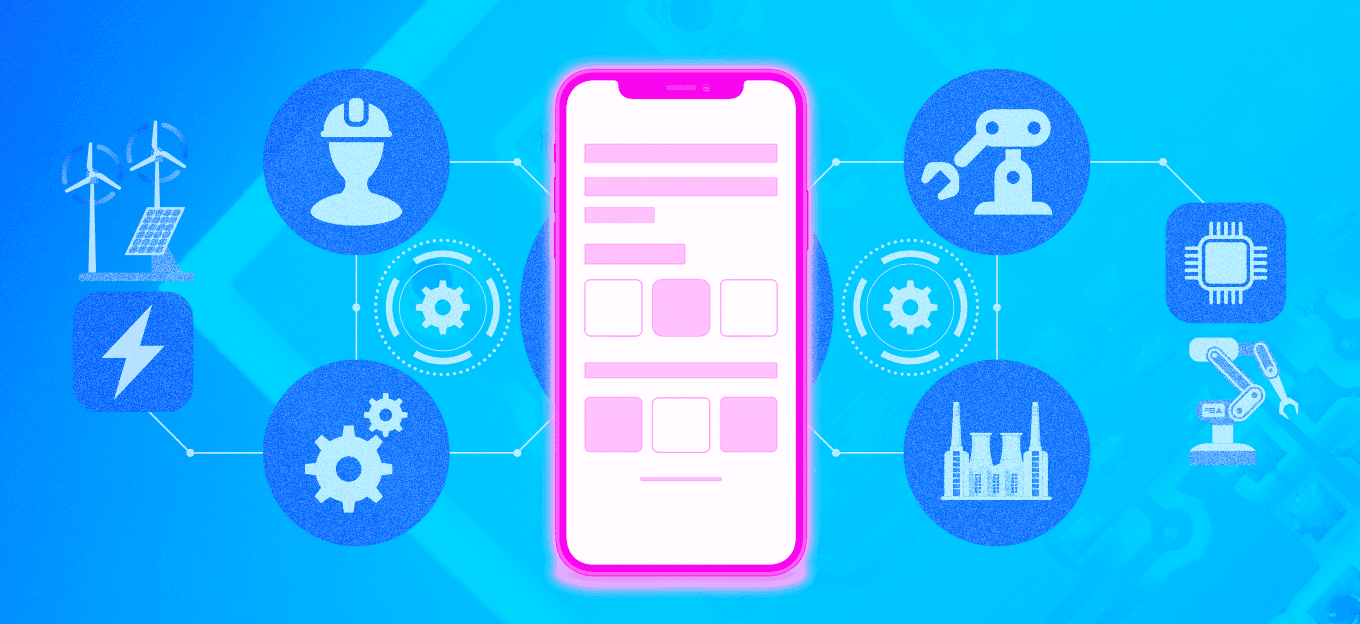Maximizing the Value of Industrial IoT with Private Mobile Networks
Maximizing the Value of Industrial IoT with Private Mobile Networks
- Last Updated: December 2, 2024
Guest Writer
- Last Updated: December 2, 2024



There is no shortage of wireless technologies available for IoT deployments, particularly for industrial IoT and factory automation settings. LoRa, Bluetooth, LTE, Z-Wave, Zigbee, and Wi-Fi are all candidates used in commercial deployments today. However, given the reliability, performance, and coverage requirements for industrial IoT and automation applications, it’s clear that 5G is a superior connectivity solution for manufacturers and industrials. So much so that the 3GPP has “baked” time-sensitive networking requirements into its standards process.
5G
When focusing on physical control applications across different vertical markets, especially industrial automation and energy automation, 5G is ideally suited to deliver more deterministic wireless connectivity. Many of today’s industrial automation and manufacturing floor applications can simply no longer tolerate any network delay or latency associated with conventional wireless solutions such as Wi-Fi. If latency is experienced, these applications often time out or stop working, often causing irreversible damage to business operations and loss of revenue and productivity.
Private 5G networks are a new connectivity option for industrial firms implementing IIoT solutions.
New private 5G technology solves these problems with ultra-reliable ultra-low-latency communication (URLLC) capabilities now required for any mission-critical Applications that require 24/7 availability and need to share real-time information. However, how 5G is deployed in an industrial IoT setting is as important as its technology.
Protocols
Thanks to the FCC’s recent decision to open up an unlicensed wireless spectrum in the CBRS (Citizens Broadband Radio Service) band, industrials interested in IoT now have the opportunity to deploy what’s known as a private mobile network.
This is very similar to the public cellular network that most of us use daily with our smartphones and tablets. Private mobile networks are built using the same 5G protocols, but the networks themselves are not owned and operated by wireless service providers like Verizon, AT&T, and others. A private 5G network is owned and operated by a single organization and geographically bound by that company’s property (like a smart factory) and managed similarly to its Wi-Fi networks today. The organization owns the equipment and data running over the network with complete control over all security and quality of service policies.
Private 5G Networks
Private 5G networks for IoT provide some critical capabilities that are not possible with other wireless technologies. Some of these include:
Enhanced Coverage
Private 5G networks are designed explicitly for the kind of network traffic generated by IIoT sensor networks. Moreover, private 5G networks give individual organizations far better control in designing and deploying a RAN (Radio Access Network) on their premise to ensure the ideal coverage for all applications. Private 5G networks are also ideal for outdoor or mixed indoor/outdoor applications.
Superior Reliability
IIoT Applications, devices, and systems need ultra-reliable connectivity to perform their core functions. From a wireless perspective, private mobile networks are the only option capable of delivering on that requirement.
Ultra-Low Latency
URLLC technologies inherent in 5G are augmented by private mobile network models, giving industrial organizations the ability to deploy applications that demand real-time communications. Applications like smart monitoring for worker safety, robotics, and heavy equipment wouldn’t be feasible without this functionality.
Enhanced Security
The private 5G network model ensures that organizations have complete control over their data and do not rely on a public wireless operator to handle one of its most valuable resources. Another benefit of this new spectrum-based “traffic lane” is that it ensures the manufacturing data traffic is kept local and separate from networks used by guests or other personnel that do not need access to secure data. That built-in security can be a critical element for business and safety reasons.
Deployment
There are multiple deployment options for private 5G networks. One of the most popular approaches is to “do it yourself” using purpose-built systems designed specifically for enterprise use. Enterprise can purchase the technology from the same supplier channels from which IIoT organizations consume other solutions. These include VARs, system integrators, and even managed service providers (MSPs).
Private 5G networks also afford organizations the rare ability to build the network on their own terms, integrating cellular technology with their existing IT infrastructure. This gives companies complete control over the organizations but does require some level of expertise internally.
Another less popular approach is contracting with a carrier or service provider that already operates a vast 5G public network infrastructure. In this case, companies are offered a “slice” of the public network virtually dedicated to them. This typically requires term contracts with a provider and relinquishes the control of the infrastructure to the operator. If something changes, a new application hits the networks, or some problem arises, the carrier is effectively charged with fixing the issue. When time is of the essence, enterprises must often wait on the carriers to resolve.
Applications
Because of its unique ability to overcome many of the inherent wireless problems associated with conventional wireless technologies, private 5G networks have begun to serve as the foundation for myriad IIoT Applications, including:
Autonomous Guided Vehicles (AGVs)
AGVs can be used for security, moving products, and many other applications. These can include wheeled robotic vehicles or even drones.
Computer Vision and Smart Monitoring Applications
In combination with machine learning, imaging is being applied to a wide range of applications. Worker safety and ensuring policy compliance are important to Applications. For example, a smart monitoring solution can ensure the appropriate amount of people are in a given area, monitor moving equipment, and guarantee that workers are wearing appropriate Personal Protective Equipment (PPE).
Predictive Maintenance
Private 5G networks can help identify metal fatigue or manufacturing faults to reduce failures and outages or determine when specific elements need to be replaced. The amount of data required by the HD cameras for this application can be huge and require a 5G connection with its high reliability and performance.
Remote Control of Heavy Equipment
Everything from cranes to earth-moving equipment to oil and gas pumps could benefit from a private 5G network. These applications are often outdoors, which requires the capabilities of 5G wireless in a private model.
These are just a few of the many applications that private 5G networks enable for the Industrial IoT.
Ultimately, based on 4G and 5G cellular wireless technology, emerging private mobile networks now offer a more robust and reliable connectivity option for a myriad of different industrial and manufacturing needs. While 5G on its own has been overhyped as the be-all, end-all for consumers, its deployment within the enterprise will profoundly impact the future of campus networks. Through the use and deployment of private mobile networks, IoT organizations can now gain immense value that translates into lower costs, improved productivity, and unprecedented security and control.
The Most Comprehensive IoT Newsletter for Enterprises
Showcasing the highest-quality content, resources, news, and insights from the world of the Internet of Things. Subscribe to remain informed and up-to-date.
New Podcast Episode

Moving Past the Pilot Phase in IoT and AI
Related Articles





